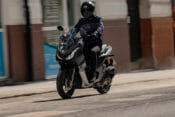2020 Yamaha XT250 Review
Slow down and enjoy life on Yamaha’s venerable XT250.
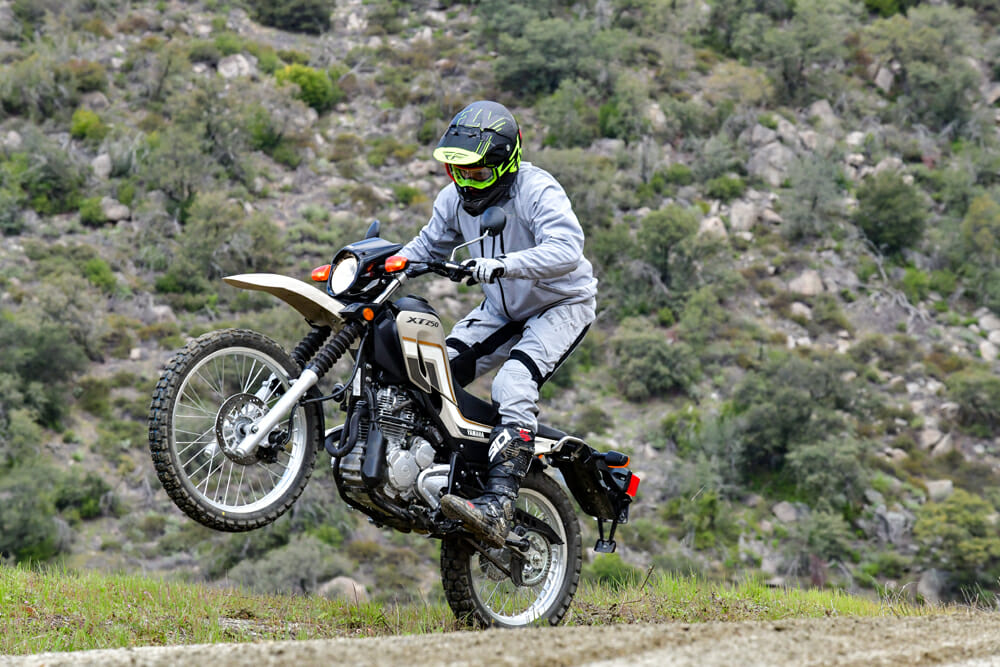
Words and Photography by Kit Palmer
Yamaha’s XT250 is proof that life doesn’t always have to be a blur to be fun. Blur, meaning going fast. More specifically, on a motorcycle. Backing it down a few notches can be even more fun than pretending every ride is a special test section in an enduro or ISDE. I was recently reminded of this after spending a couple of weekends tooling around on Yamaha’s latest XT250 dual sport.
The XT250 has been a staple in Yamaha’s dual-sport lineup since its debut in 1980. It was, however, discontinued in 1991 in favor of the XT350. The XT250 returned in 2008 as an all-new model, replacing the XT350 and, in the U.S., the beloved Yamaha XT225, also known for many years here as the Serrow, which it is still called in many other countries. You might recall that 2008 was the same year Yamaha introduced the pricey WR250R, a comparatively sophisticated fuel-injected dual-sport with fully adjustable suspension and USD forks that effectively ran the XT350 out of town while breathing new life into the returning XT250, which could be considered, for all intents and purposes, an XT225 on steroids. While the WR250R was aimed at more experienced riders, the XT250 continued as Yamaha’s recruitment tool for attracting new or returning riders wanting to learn how to ride or to have something just to bop around on.
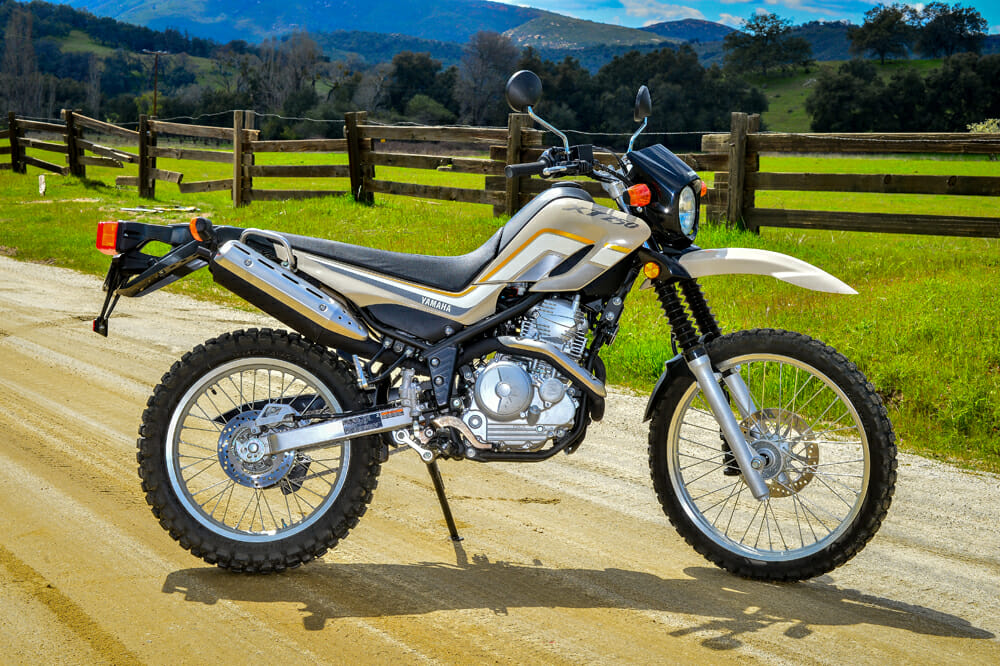
The XT250 got its next significant upgrade in 2013 when it received fuel injection. It has returned every year since as the same motorcycle, just in different wardrobes.
Through all this, the XT250 has been one of Yamaha’s best-selling motorcycles and for good reason. Many have discovered the XT250’s many attributes. For example, its motor.
There are few more reliable and durable motors out there than the XT’s 249cc air-cooled four-stroke SOHC two-valve single-cylinder powerplant. It has a reputation for being bulletproof, which is ideal for the recreational rider who would rather twist the throttle than twist a wrench. Keep the air filter clean and change the oil when you should and the XT’s motor will easily outlive reruns of Everybody Loves Raymond.
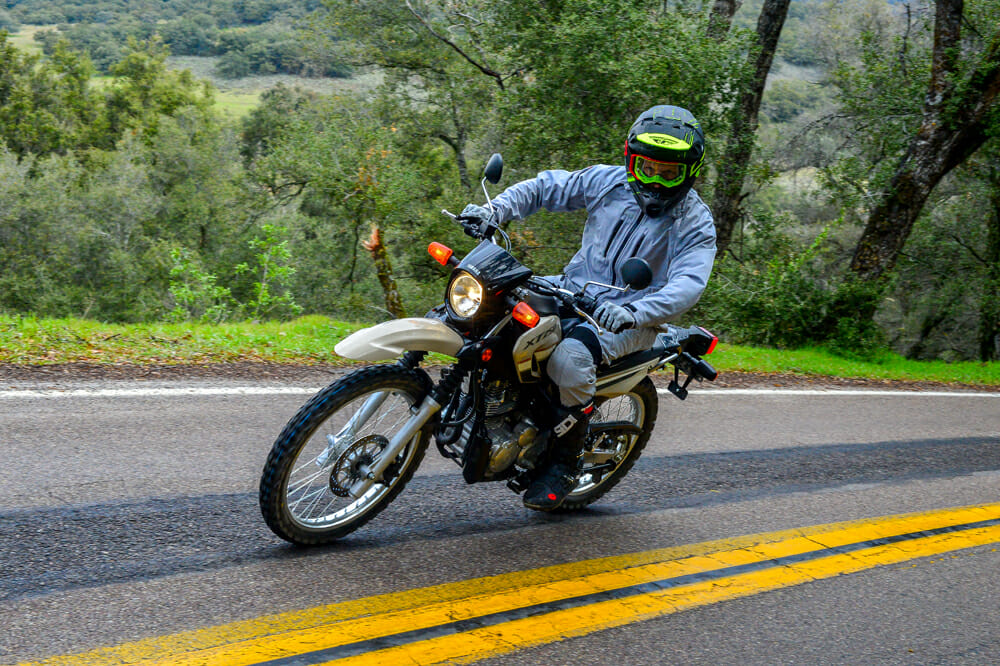
Performance-wise, the XT250 makes un-intimidating power, which is great for newbies and casual trail riders, or for those wanting something fun and easy to execute those quick trips to the grocery store on. It’s an economical motorcycle, too. The XT holds a generous 2.6 gallons of fuel and with a claimed 76 mpg, just a few dollars will buy you many hours of good cheap fun on the little Yamie.
Again, there is nothing scary or intimidating at all about the XT’s motor (or the whole motorcycle for that matter). The experienced rider would prefer more power, of course, but the casual play rider or beginner who is just looking for something relaxing and easy-going to cruise around and explore the hills on will love it for its user-friendly demeanor.
Fuel injection is a huge bonus. Compared to my wife’s carbureted XT225, the fuel injected XT250 is far better, even my wife, who doesn’t know the difference between fuel injection and Botox injection, can feel the difference. Warm-up is instantaneous and throttle response is much crisper and far more predictable.
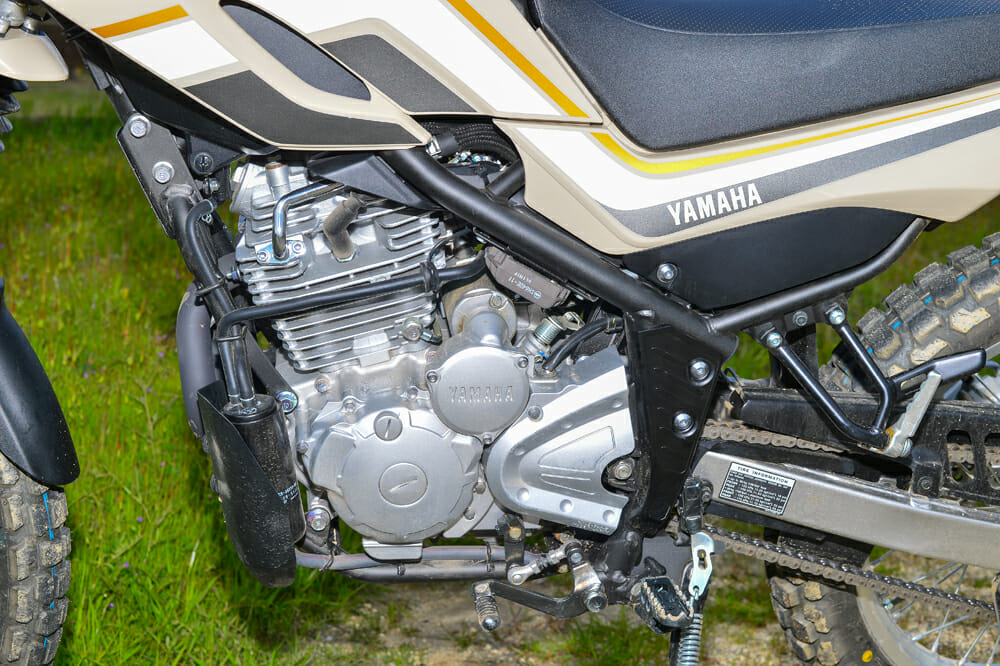
The XT250 has a five-speed transmission that works in harmony with the XT’s power delivery, but you’ll quickly run out of gear on the open highway, which, again for a motorcycle like this, is expected. It tops out semi-comfortably around 60 mph which is just good enough for those quick highway jaunts to get you to the next trailhead. Otherwise, steer clear of the freeways.
Shifting gears, however, is a challenge. The shift lever is tiny and positioned way too close to the footpeg, which might be okay for an infant but not for anyone with a foot larger than a size two. At least clutch pull is ultralight and has a good feel.
As with the shift lever, the rear-brake pedal is also way too small and often is hard to find.
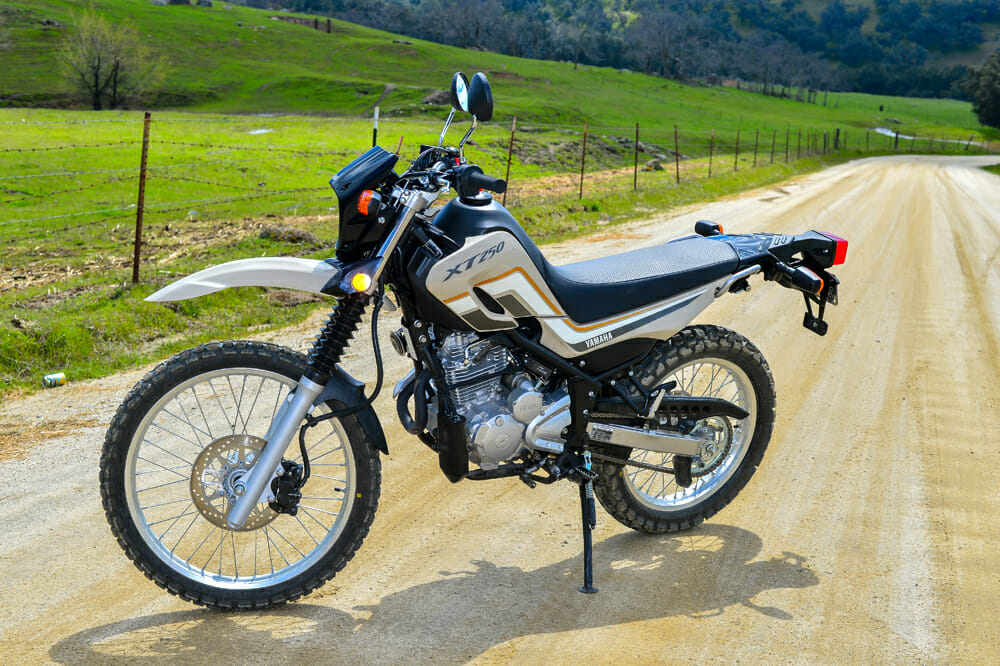
Brake power, however, is adequate. Experienced riders will want more bite from the front disc, but for beginners, there is plenty of recovery room when it comes to front-brake mismanagement. A panic grab won’t result in an automatic faceplant. Initial bite is weak but pull harder and things will slow down rapidly and predictably. The back brake works just fine. No complaints there.
Yamaha found a good compromise when it comes to the XT’s suspension. Yes, it’s a little on the soft side overall but for the type of riders this motorcycle is intended for, I’d say Yamaha nailed it. For casual romps in the hills, the suspension is quite good for a wide variety of weight and there is some room for tuning via the shock’s spring preload and rebound damping adjustments.
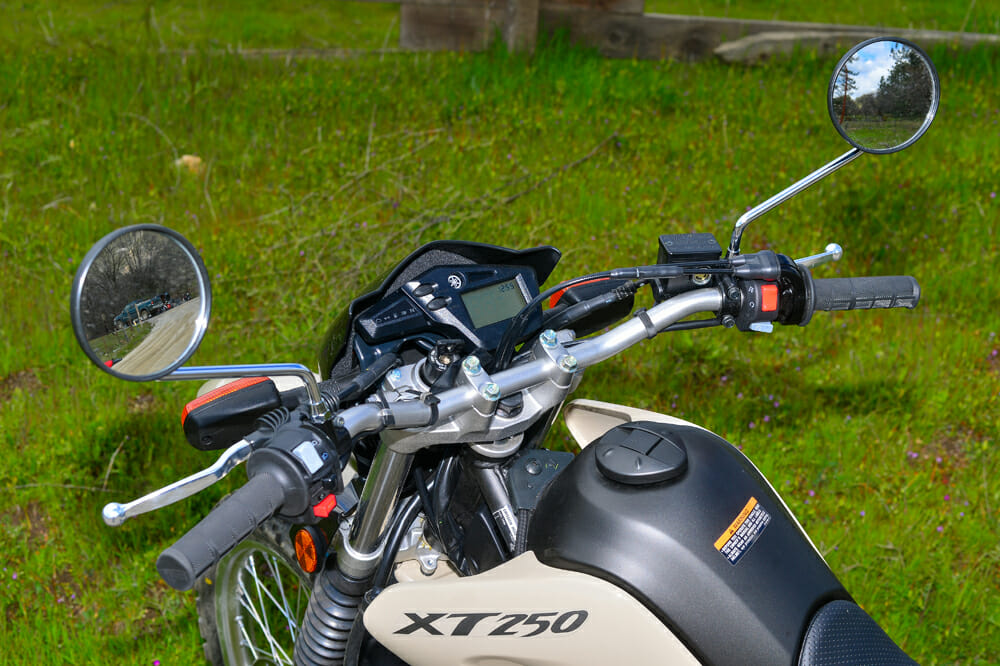
At 32 inches, seat height seems a little high on paper for a motorcycle such as this, but the XT is so narrow at the seat/tank junction that it is easy to firmly plant both feet on the ground. My wife is 5’4” and could touch the ground with both feet, no problem. Some people might question why Yamaha didn’t give the XT water cooling, but the lack of radiators helps keep the width (weight and center of gravity) of the bike down, which results in a dual-sport bike that is extremely easy to maneuver and move around on. The XT250 is not exactly light on the scales at a claimed 291 pounds but feels light and agile on the trail. It has a short 53.5-inch wheelbase and an extremely tight turning radius, which can come in real handy on extremely tight and technical trails.
Another nice but often overlooked attribute of the XT is ground clearance—it has a generous 11-plus inches, which is a good thing considering the skid plate is invisible. Consider shopping for an aftermarket skid plate (and handguards while you’re at it) as one of your first purchases for the XT250.
The XT250 comes fitted from the factory with Bridgestone Trail Wing tires, which are a good compromise between street and dirt. They work well on the pavement and are aggressive enough to provide decent and confident-inspiring grip off-road.
Probably the best thing about the XT250 is that license plate on the back. It opens the door to many more legal areas to ride than dirt-only motorcycles. Even though the XT250 is technically a full-size motorcycle, it doesn’t feel that way between your legs (it feels small in overall size) and is one of only a few bikes like this that caters to newbies and shorter inseamed riders that is both dirt-focused and street legal. Suzuki’s DR200 quickly comes to mind, as does Yamaha’s own TW200.
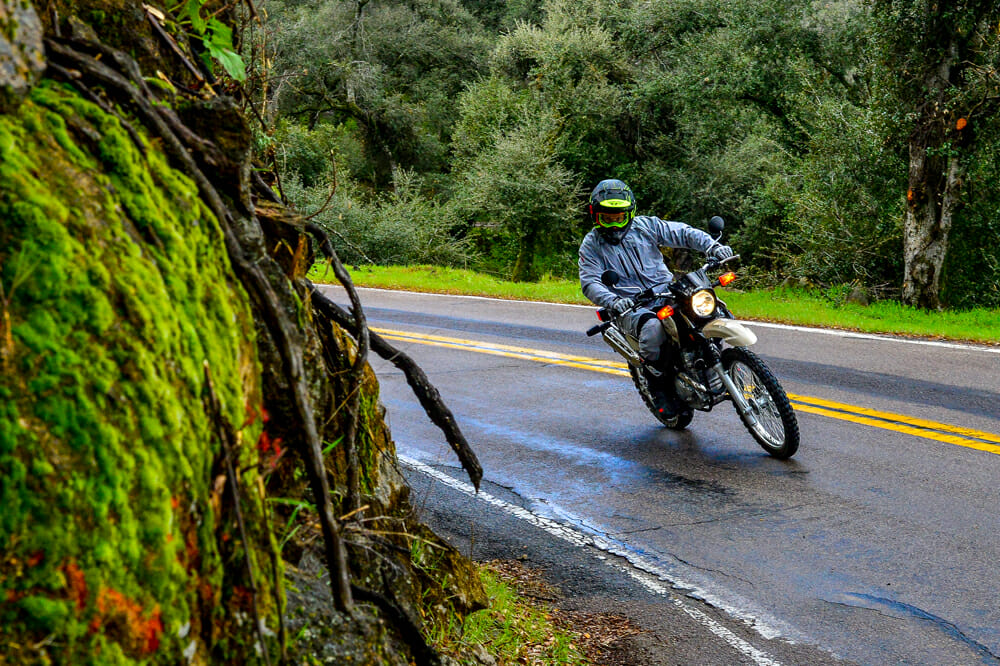
Well, I might be wrong about one thing. Perhaps the best thing about the XT250 is that it has a helmet lock!
You can get the XT in a variety of colors as long as it’s Sandy Beige. It’s a somewhat odd color for a dual-sport motorcycle but, in my opinion, looks much better in person than it does in pictures. So, don’t make up your mind on the way it looks until you see one in real life and up close.
You might be wondering what sets the XT250 apart from it and some of its comparable rivals, such as the popular Honda CRF250L, which shares the same $5199 price tag as the XT250. There are two that stand out in my mind: seat height and weight. The XT weighs approximately 30 pounds less than the CRF and has a two-inch lower seat height. And you can expect the XT to have the same similar advantages over many of the other bikes in its class, too. Power won’t be one of them, though.
It’s easy to forget about the Yamaha XT250, a motorcycle that has been around a long time and hasn’t seen a major update in a while. So there hasn’t been a real reason to talk about it lately. But that doesn’t make the XT any less intriguing and compelling when it comes a low-priced dual-sport motorcycle that is ideal for people wanting to learn how to ride, or for those just looking for a good time and an inexpensive, practical, reliable and go-anywhere motorcycle without the blur. CN
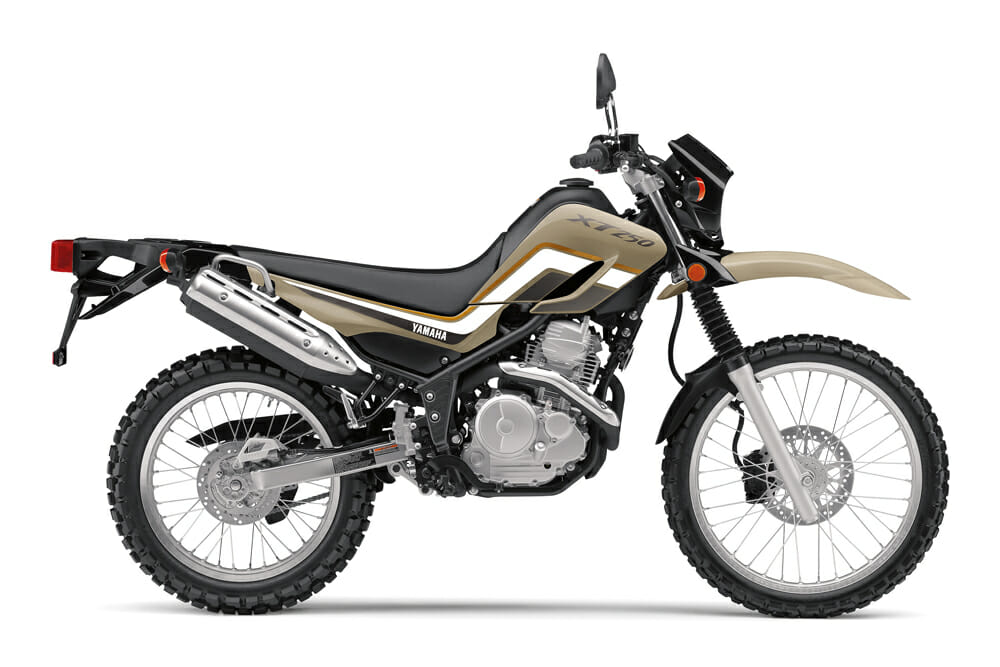
2020 Yamaha XT250 Specifications
| MSRP: | $5,199 |
| Engine: | Air-cooled, 4-stroke, SOHC, 2-valve, single |
| Displacement: | 249cc |
| Bore x Stroke: | 74.0 x 58.0mm |
| Compression Ratio: | 9.5:1 |
| Fuel Delivery: | Yamaha Fuel Injection (YFI) |
| Ignition: | TCI (Transistor Controlled Ignition) |
| Starting System: | Electric (push button) |
| Transmission: | 5-speed; multiplate wet clutch |
| Final Drive: | Chain |
| Frame: | Steel semi-double-cradle |
| Front Suspension: | 35mm telescopic fork |
| Rear Suspension: | Single shock, linkage, adjustable preload & rebound damping |
| Front-Wheel Travel: | 8.9 in. |
| Rear-Wheel Travel: | 7.1 in. |
| Front Brake: | Single 245mm disc |
| Rear Brake: | Single, 203mm disc |
| Wheels: | Aluminum |
| Front Tire: | 2.75-21 in. |
| Rear Tire: | 120/80-18 in. |
| Seat Height: | 31.9 in. |
| Wheelbase: | 53.5 in. |
| Length/Width/Height: | 84.6 in. / 31.7 in. / 45.7 in. |
| Rake: | 26.4° |
| Trail: | 4.2 in. |
| Ground Clearance: | 11.2 in. |
| Instruments: | LCD |
| Lighting: | 60/55-watt halogen headlight |
| Fuel Capacity: | 2.6 gal./2.4 gal. CA model |
| Fuel Economy (claimed): | 76 mpg |
| Weight (wet, claimed): | 291 lbs. |
| Color: | Sandy Beige |
| Warranty: | 1 year (limited factory warranty) |
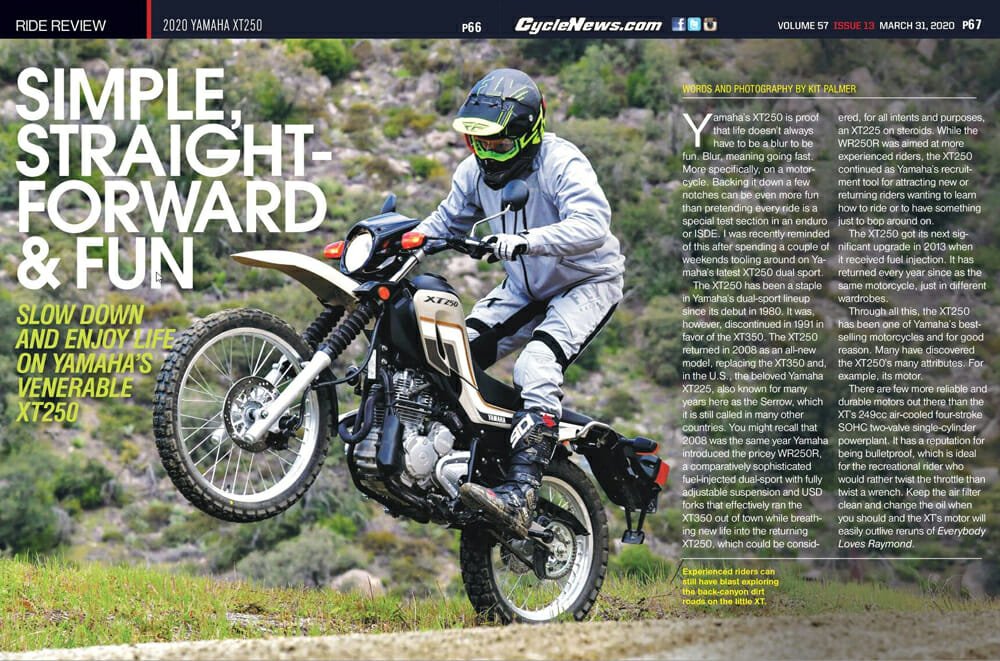
Click here to read this in the Cycle News Digital Edition Magazine.
Click here for more Yamaha motorcycle reviews and news.
Click here for the latest Cycle News Dual Sport motorcycle reviews and news.
